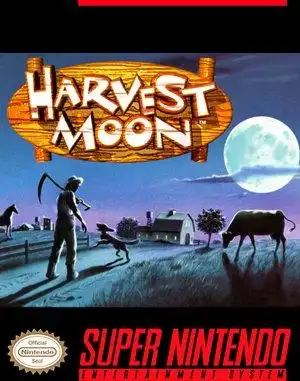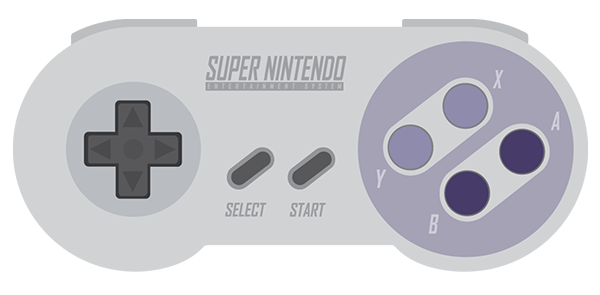Harvest Moon SNES: Tending the Roots of a Genre
Remember the satisfying feeling of watering your crops, the simple joy of finding a wild berry, or the low-stakes drama of trying to win over a potential spouse? If those memories spark a warm wave of nostalgia, chances are you spent some time with the game that kicked off a global phenomenon: Harvest Moon on the Super Nintendo Entertainment System.
Released between 1996 and 1998 across different regions, this seemingly simple farming simulation RPG from Amccus wasn't just a game; for many, it was an escape to a peaceful, pixelated rural life. It laid the groundwork for countless sequels and inspired a whole genre of cozy, life-sim games we still adore today. Let's take a trip back to the farm that started it all.
The Genesis of a Genre: How Harvest Moon SNES Came to Be
The story of Harvest Moon SNES is almost as charming as the game itself. Producer Yasuhiro Wada, inspired by his own rural upbringing and the non-combat focus of games like Derby Stallion, wanted to create something different. An RPG where the goal wasn't to slay dragons or save the world, but simply to restore a neglected farm and live a peaceful life.
Development wasn't without its hiccups – including a publisher going bankrupt – but the small team persevered. The result was Bokujō Monogatari in Japan, which arrived in North America and Europe as Harvest Moon. Localization brought a few quirks (like turning alcohol into "juice"), but the core charm remained intact, introducing players outside of Japan to this unique blend of farming, life simulation, and light RPG elements.
Life on Your Virtual Farm: Gameplay Mechanics
Inheriting a rundown farm from your grandfather is the premise, but the heart of Harvest Moon SNES was in the daily grind – a delightful, relaxing grind, mind you!
Your days were filled with essential tasks:
- Farming: Clearing land, tilling soil, planting seeds, and crucially, watering your crops daily. Miss a day, and your plants weren't happy.
- Animal Care: Getting chickens and cows, feeding them, and showing them affection. Neglect meant sickness or worse, adding a layer of responsibility.
- Foraging: Exploring the mountain and forest for wild items to sell or use.
- Socializing: Visiting the small town, talking to villagers, attending festivals, and building relationships – maybe even finding a partner to marry!
It wasn't about complex combat or intricate skill trees. It was about routine, patience, and seeing the tangible results of your work as your farm slowly transformed from overgrown mess to thriving homestead. This simple loop was incredibly addictive.
Why We Still Love It: Reception & Legacy
Upon release, Harvest Moon SNES was praised for its unique concept. Critics and players alike found the farming RPG blend refreshing and the variety of tasks engaging. It wasn't a massive blockbuster compared to some SNES titans, but it sold well enough (over 100,000 in Japan alone) to prove there was an appetite for this kind of game.
Its real impact, however, is its legacy. Harvest Moon on the SNES wasn't just a game; it was the seed from which a massive, beloved franchise grew. Every subsequent Harvest Moon title, and later the games rebranded as Story of Seasons in the West, owes its existence to this 16-bit pioneer. It proved that quiet, domestic life could be just as compelling in a video game as epic adventures. Its influence can be seen in countless modern indie hits that embrace the cozy, life-sim genre.
Reliving the Charm Today
Feeling the urge to revisit those pixelated fields? While finding an original SNES cartridge can be a collector's quest, there are ways to experience the magic of Harvest Moon SNES today. The game has seen re-releases on various Nintendo Virtual Console platforms over the years. Additionally, the world of retro game preservation through emulation allows fans to play classics like this on modern hardware (often found via resources like the Internet Archive). Just make sure you own the original game if you go that route!
Whether you're a veteran farmer or curious about the series' roots, the original Harvest Moon on SNES remains a charming, relaxing, and historically significant title worth experiencing.
Frequently Asked Questions (FAQ)
Is Harvest Moon SNES the very first game in the series?
Yes, the Super Nintendo release is the foundational game that started the entire Harvest Moon (now Story of Seasons) franchise.
What's the difference between Harvest Moon and Story of Seasons?
They are part of the same long-running series. The games originally released as Harvest Moon in the West were localized by Natsume. Since 2014, the original developer (Marvelous) uses a different localization publisher (XSEED Games), and their games are now released under the name Story of Seasons. The SNES game is from the era when it was called Harvest Moon.
Can I play Harvest Moon SNES on modern consoles?
The game has been available on various Nintendo Virtual Console services in the past. Availability may vary depending on the current platform (like Nintendo Switch Online). Retro game emulation is another way fans play older titles, often found through resources dedicated to game preservation.
Is Harvest Moon SNES difficult?
It's not difficult in the sense of combat or complex puzzles. The challenge comes from managing your time and resources effectively to grow your farm and build relationships within the game's time limits (usually a two-year goal). It's more about planning and routine than high-pressure challenges.


